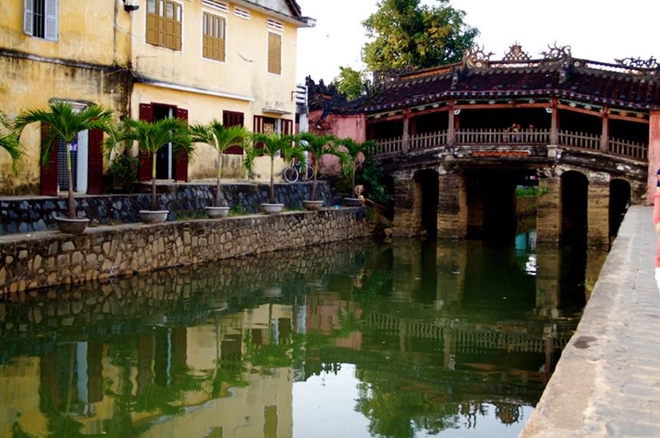Japan helps Hoi An deal with wastewater pollution
PSNews – The authorities of Hoi An hoped that the modern wastewater treatment facility in the area near Pagoda Bridge, which was mostly sponsored by Japan will help the ancient town deal with wastewater pollution, contributing to creating a green, clean and beautiful landscape.
- Mekong Delta of Vietnam attracts Japanese investment
- Vietnam – Japan Friendship Industrial Park inaugurated in Can Tho
- Japan helps Vietnam control HIV/AIDS
Built by Japanese traders in the 17th century, the bridge is an icon of Hoi An in central Vietnam. In October, Hoi An town of Vietnam has been ranked 5th on the list of the 10 favourite cities in Asia by Travelandleisure.
However, in recent years, the canal under the bridge has been polluted because of wastewater discharged by households, hotels and restaurants.
 |
| Pagoda bridge in Hoi An. |
The authorities of Hoi An has searched for a number of remedies, but pollution continues to occur in the canal. On hot days, many visitors prefer to avoid the bridge because of the stench from the canal.
In 2015, the Vietnamese government signed an agreement with Japan to build a modern wastewater treatment facility in the area near the bridge. The Japanese government offered non-refundable aid of VND240 billion ($10.2 million) for the project while local government spent VND48 billion on land clearance in the Cam Pho Ward.
In the beginning of November, the Japan International Cooperation Agency and the construction unit handed over the modern wastewater treatment facility to the Hoi An Municipal People's Committee.
The authorities of Hoi An believed that the modern wastewater treatment facility in the area near Pagoda Bridge will help the ancient town deal with wastewater pollution comprehensively, contributing to creating a green, clean and beautiful landscape.

